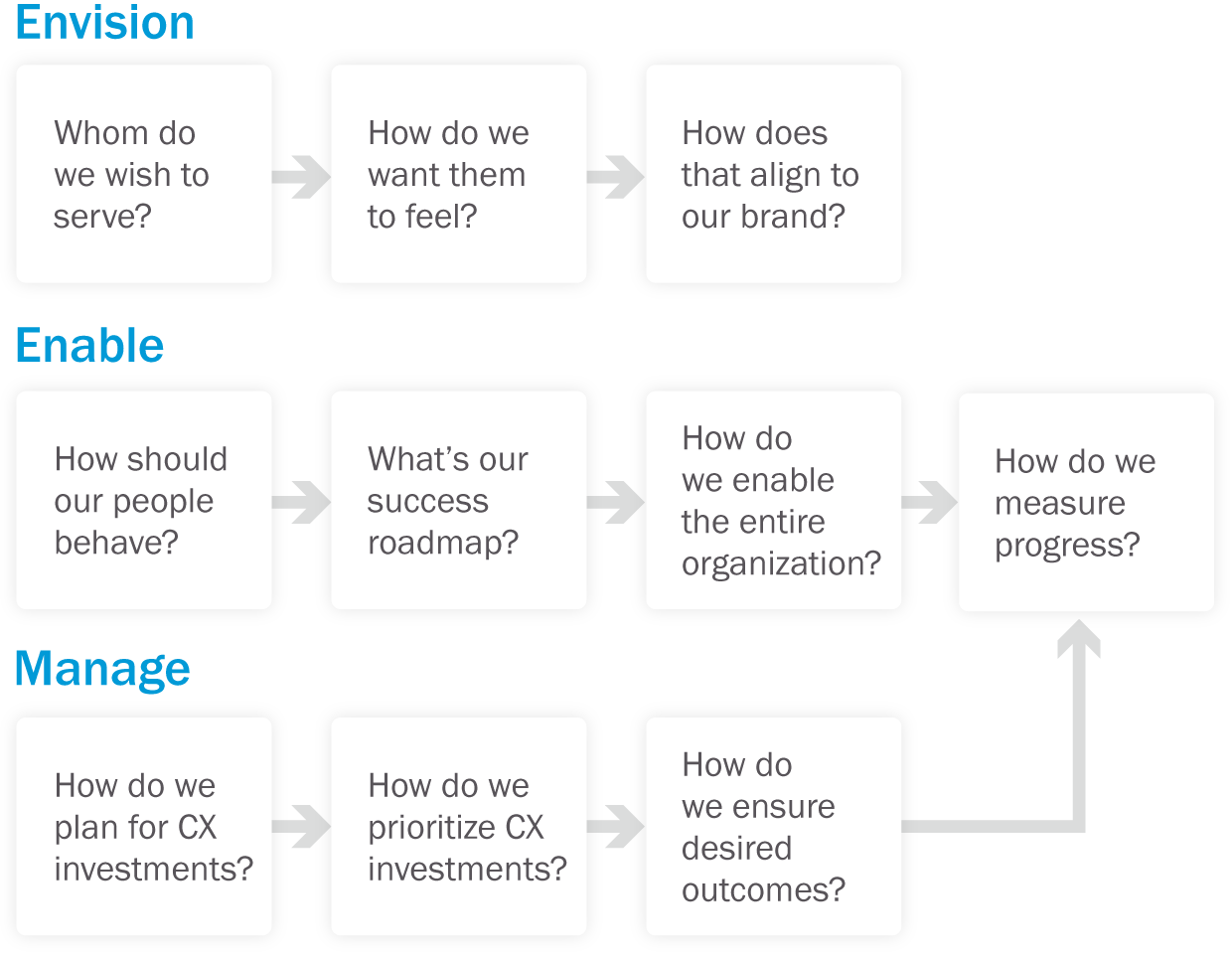Envision
Articulating a clear vision for the customer experiences you plan to deliver is the first step in crafting a successful strategy. This “North Star” vision should align with your organization's core values and long-term objectives, guiding all your actions and decisions. Understanding who your customers are—through detailed personas—and tailoring experiences to their specific needs and expectations is crucial to achieving this vision.
Enable
Turning vision into reality requires enabling your people, systems, and processes to support the strategy. This involves embedding the vision into the organizational culture, ensuring that everyone from the top down is aligned with the strategic goals. Clear communication, ongoing training, and effective leadership are key to enabling your team to deliver on the vision consistently.
Manage
Effective management of your CX strategy involves prioritizing and allocating resources where they will have the most impact. This requires careful planning, rationalizing experience-related investments, and consistently prioritizing initiatives that drive customer experience success. Managing these resources effectively ensures that your strategy remains agile and responsive to changing customer needs.


![EightKeys-1-Strategy–expanded[56] EightKeys-1-Strategy–expanded[56]](https://www.mcorpcx.com/hubfs/EightKeys-1-Strategy%E2%80%93expanded%5B56%5D.png)

